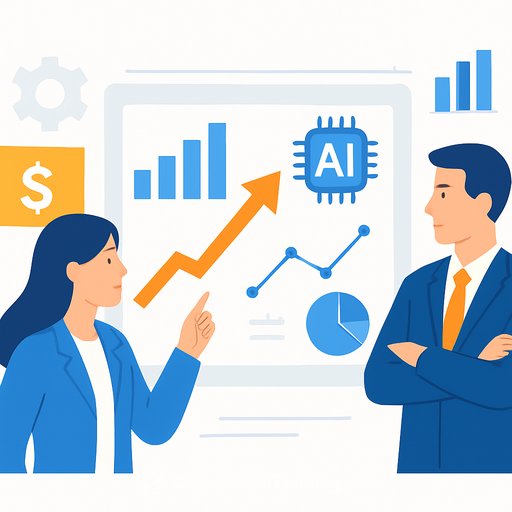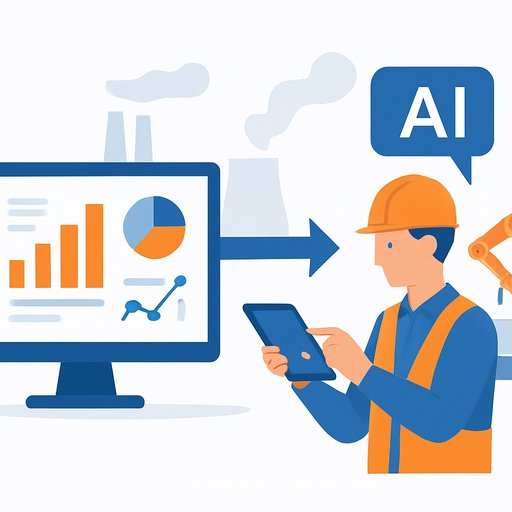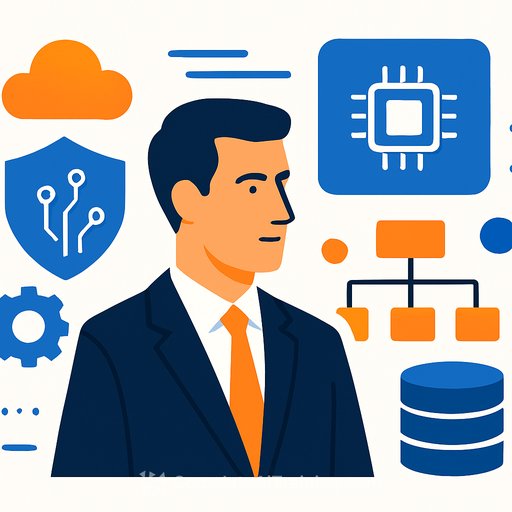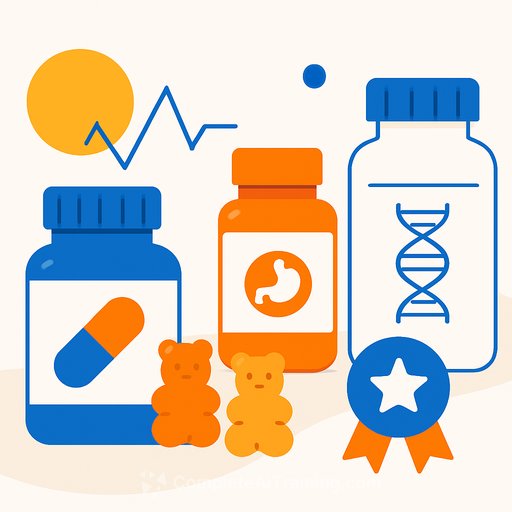AI In Banking: Practical Playbooks From Builders In The Trenches
AI is past the hype cycle in finance. Operations and product teams are now being measured on delivery: cleaner data, faster onboarding, lower cost, better risk controls, and smarter customer engagement.
Here's what senior leaders from DBS, CTBC, SmartStream, and CGI shared about what actually works-and what doesn't-when you move AI from slideware to systems.
Why introduce AI? Clear drivers matter
- CTBC (Alan Sung): Make banking smarter, safer, more personal-for customers and employees.
- CGI (Andy Schmidt): Extend RPA/automation into company intelligence. Start inside the house first (e.g., bid generation) before scaling to clients.
- DBS (Nimish Panchmatia): Three goals: customer value, smarter ways of working, and stakeholder value. Keep priorities simple and measurable.
- SmartStream (Robin Hasson): Speed up solution development and cut internal costs via AI prototyping, evaluation, and workflow efficiency.
Culture first, then data, then platforms
DBS tried early AI in 2014 and hit walls. The lesson: people and data readiness come before fancy models. They built a "show me the data" culture, collapsed 12 data warehouses into a single platform, and invested heavily in metadata, lineage, and quality checks.
Result: one platform for traditional, generative, and agentic AI. Hard work, yes-but it's the control plane for governance and value creation.
Don't bolt AI onto old workflows
A common miss: dropping AI into a legacy process and expecting magic. Schmidt's team re-engineered requirements gathering so stakeholders interacted with an AI agent first. That cut creation time from weeks to days-far beyond the usual 3-5% "process improvement."
Ops/Product takeaway: redesign around what the AI can do natively. Then pick tooling.
Data quality is the grind-do it anyway
CTBC serves half of Taiwan and 1.6 million corporates. Their struggle: heterogeneous data, cleanliness, and lineage. They set up a Data & AI Governance Committee to keep standards high.
DBS runs ~6 PB on its analytics platform. Getting data in with proper metadata and lineage took years. Newcomers often underestimate this part. Don't. It's where reliability is won.
SmartStream uses reconciliations to separate good/bad data, recommend fixes, and feed clean data back into ML training. Better matches and better MIS follow.
Proving value: pick the right metrics
- DBS: Publishes audited AI value; aiming to cross S$1B this year (up from S$750M). Every use case is test/control measured across cost, revenue, customer, and employee impact.
- SmartStream: Learned from user matching behavior to cut manual effort by 52% on complex reconciliations-less headcount drag, faster completion, lower key-person risk.
- CGI: Don't just chase cost. Faster onboarding drives earlier revenue and better experience; define how success will be measured before you build.
Customer engagement that actually moves numbers
DBS's "Next Best Nudges" reached ~13M customers last year. In Singapore, users who engaged saved 2x more, invested 5x more, and were nearly 3x more insured than non-users.
They combine AI with behavioral science, lifting clickthrough by 20-30%. Every nudge is measured and iterated.
Privacy is governed by PURE-Purposeful, Unsurprising, Respectful, Explainable. If a use case fails that test, it doesn't ship.
Guardrails beat regrets
DBS applies strict guardrails to generative AI to limit hallucinations and keep risk low. That sometimes narrows ROI in the short term. It's the right call for a regulated sector where one bad customer interaction becomes a regulator conversation.
Fraud is an ecosystem problem
CTBC's AI Skynet learns across channels to spot hidden patterns and reduce false positives. But fraudsters work as networks, so CTBC connects with police, the Financial Supervisory Commission, and the Financial Information Service to trace transaction paths and coordinate alerts across banks.
Bottom line: single-bank defenses aren't enough. Build data-sharing workflows and escalation protocols with external partners.
Talent: what to hire and what to teach
- Experience with AI is now baseline for new hires in product and engineering. Data design and lineage awareness matter.
- Mindset beats tools: curiosity, tenacity, critical thinking, change agility. These will separate strong operators from checkbox users.
- Upskill at scale: DBS rolled out gen AI training (workshops, e-learning, live webinars) and identified 12,000+ employees for re/upskilling across AI and data.
- Practical formats: prompt-a-thons to spark usage, code assistants with senior review for security, and clear rules on who can use what.
Agentic AI: promise with checks
Agentic systems can route work, follow policies, and learn from outcomes. They also introduce audit and policy questions that current platforms don't fully solve yet.
Use cases that are working: marketing, behavioral science, and some complex flows like end-to-end corporate credit. But proceed in steps, avoid pilot fatigue, and plan for technical debt and human oversight.
MCP will standardize how AI talks to systems
Model Context Protocol (MCP) can standardize how models and agents interact with tools and data-reducing one-off plumbing and making governance easier. It also introduces probabilistic behavior, so you need guardrails and audits.
- DBS: Treat MCP like APIs: necessary, helpful, but requires added verification layers or human-in-the-loop.
- CTBC: MCP can be the "Dewey Decimal System" for AI governance-one standard to enforce identity, access, and auditing across vendors and business units.
- SmartStream: MCP energy can finally push teams to expose internal endpoints so agents resolve breaks automatically, reducing manual swivel-chair work.
Learn more about MCP and keep your policy and audit models close to every action an agent takes.
Risk frameworks worth your time
AI in finance is about control and clarity. If you haven't yet, anchor your program to a well-known reference and adapt it to your institution's needs.
R&D meets the business: 80/20 that sticks
CTBC runs an 80/20 split: 80% on business demand; 20% on exploratory builds. They turn that 20% into MVPs, pitch to business owners, tailor POCs with clear benefit, then scale the engines that prove their worth.
This keeps invention aligned to real adoption.
What operations and product teams should do next
- Set intent: pick 3-5 measurable outcomes (cost, speed, revenue, risk, experience). Define test/control up front.
- Redesign the workflow: don't drop AI into legacy steps. Start where agents or models naturally create leverage.
- Clean the data: invest in lineage, metadata, and quality checks. Appoint owners, not committees on paper.
- Ship guardrails with features: policy tests, hallucination checks, and human review for high-risk actions.
- Prove value fast: aim for 30-60 day POCs tied to a single KPI. Kill or scale decisively.
- Document explainability: decision logs, prompts, context, and model versions-especially for regulated flows.
- De-risk key-person knowledge: capture expert actions into models or agentic workflows with senior sign-off.
- Plan for MCP: publish internal capabilities behind a standard and attach audit hooks from day one.
The five-year unlock
The tech will keep improving. The harder challenge is organizational: banks are built as vertical silos while customers live horizontal experiences. AI will force this to change.
Leaders who redesign around cross-functional, data-first flows will widen margins, enter markets they couldn't serve before, and move faster with less effort.
Want structured upskilling for your team?
If you're standing up AI programs across product, data, or operations, curated training can shorten the learning curve.
Your membership also unlocks:










